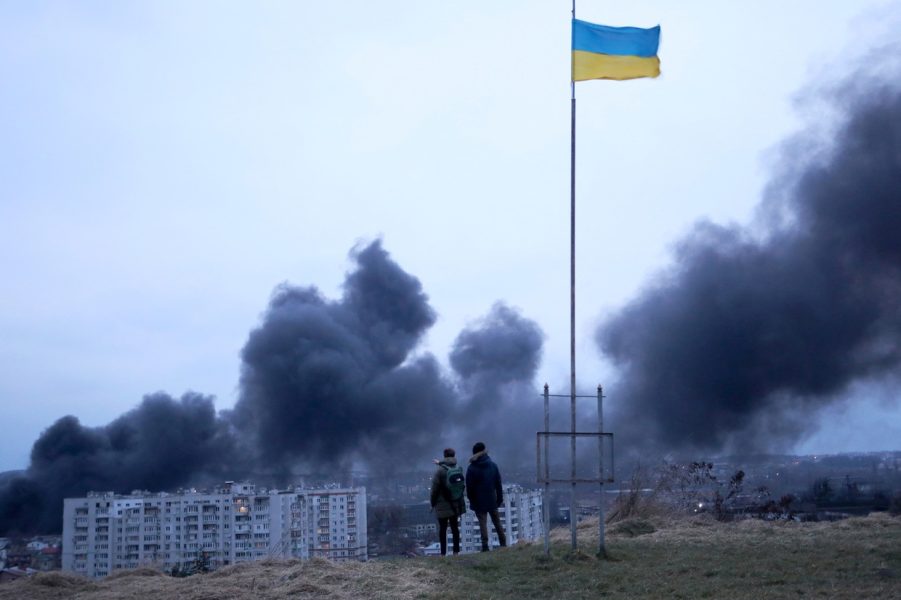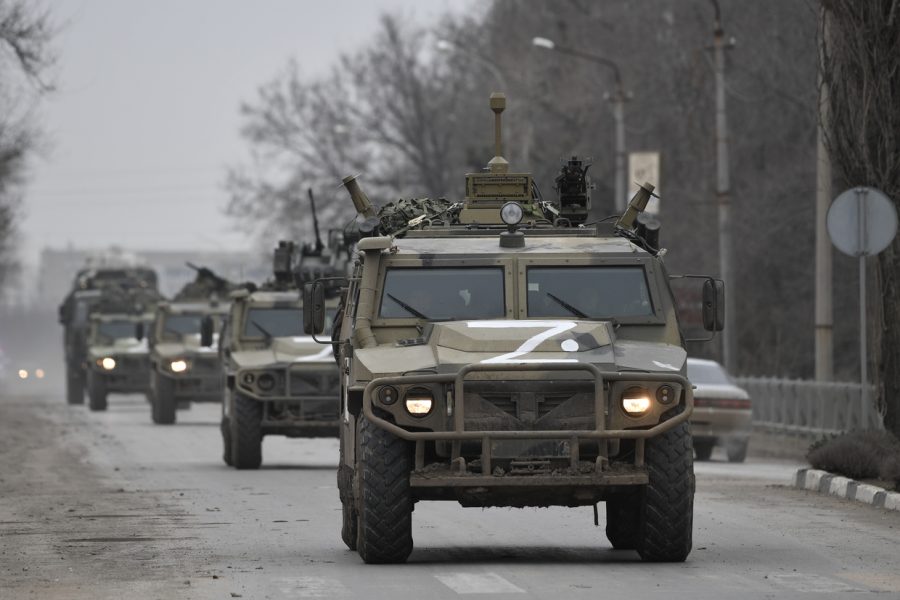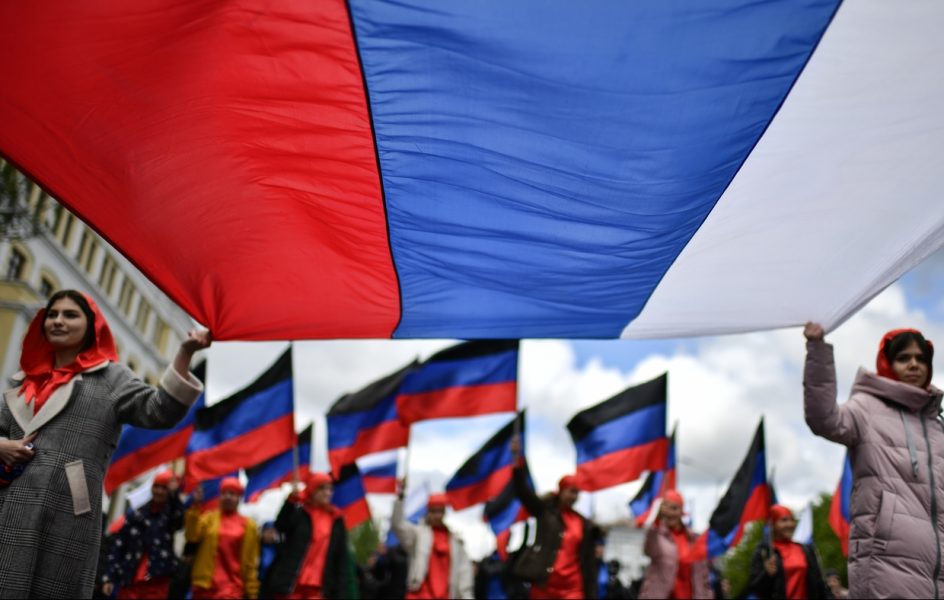Alexander Nepogodin: Modern Ukraine was built on an anti-Russia foundation, but a large part of the country refused to play along

 Alexander Nepogodin
Alexander Nepogodin
RT.COM
Ukraine's divisions will help Russia consolidate the territory it now controls. But there are a lot of challenges ahead
The conflict in Ukraine has many frontlines. The world is mostly focusing on the hostilities, but an even more serious conflict is unfolding inside the Ukrainian camp. This standoff between Ukrainians and Russians as two political nations has been developing since 2014, but it entered a new, decisive phase after Russia began its military offensive, three months ago.
Since the fall of the Soviet Union in 1991, three groups with strong identities have co-existed in Ukraine. A state which first came into being as recently as 1917, and had its current borders set by Joseph Stalin, the Georgian dictator who led the USSR until his death in 1953.
The first one, Ukrainian-speaking Ukrainians (or Galicians, named after the historical region of Galicia), mostly live in Ukraine’s western and central territories. Their ethnic narrative is very clear, they consider Russians to be their enemy, and their main icon is the World War Two Nazi-collaborator Stepan Bandera.
The Galician motto is something along the lines of “if you disagree with us, there is still time – pack your suitcase and catch the next train to Russia.” They are pushing the narrative that Ukraine as a nation doesn’t depend on Russia and the Russians. This is supported by their choice of national heroes. Hetman Ivan Mazepa sided with King of Sweden Charles XII during the Great Northern War between Russia and Sweden. Symon Petliura was the president of the Ukrainian People’s Republic during Ukraine’s sovereignty in 1918–1921. The aforementioned Bandera founded and led the Organization of Ukrainian Nationalists from the 1920s to the 1950s.
As for Russian-speaking Ukrainians living in central and southeastern parts of Ukraine, they never thought of Russians as strangers or enemies, before the propaganda which followed the 2014 Maidan coup in Kiev. And the third group living in Ukraine consists of ethnic Russians. They are connected with the Russian-speaking Ukrainians by language and the historical narrative – both of these groups believe they fought on the right side of history when they defended the Soviet Union from the Nazis during World War II.
West Ukrainians have a rather different view, but they also believe their past to be virtuous. They say their ancestors didn’t fight for the Third Reich, but rather for an independent Ukraine, even if they were part of the Ukrainian Insurgent Army (banned in Russia) which participated in the holocaust, helping to slaughter Jews.
In other words, these groups, especially the Ukrainian-speaking Ukrainians and the Russians, are separated by different views of history, different languages, and different political representation. Just think of the 2013-14 "Euromaidan" when the “pro-Western” and “pro-Ukrainian” forces overthrew Viktor Yanukovych, the supposedly “pro-Russian” president (despite his years of negotiations with the EU).
That conflict had been brewing in society for many years – just look at the names people from different regions called each other. “Ragul” (a derogatory word for a farmer, a village resident), “zapadenets” for people from western Ukraine, and “moskal,” “kommunyaka,” or “colorad” (because of the colors of St. George’s ribbon, which symbolizes Russia’s victory in the Great Patriotic War) for those living in southeastern regions. However, before 2014, the conflict of narratives was moderate, and the balance was upset after the policy of building a national state began to dominate.
In the middle have been the moderate group – Russian-speaking Ukrainians (or, to quote Mikhail Pogrebinsky, a political analyst living in Kiev – “Russian Ukrainians”). This group has always been placed between political Russians and radical Ukrainians, drawing some of its identity from both camps but also being somewhat unique. Their attitude towards Russia and Russian culture has been a key issue since the beginning of the conflict in 2014.
Everything was clear-cut with radical Ukrainians – they always considered Russians enemies and viewed Russia as an aggressor and existential threat. Moderate Ukrainians, on the other hand, didn’t feel animosity towards Russians and even agreed to call them a “brotherly nation.” The Russian and Ukrainian cultures were deeply intertwined in their reality, so it was hard for them to separate the two. The contact line in the Donbass in 2014 separated two armies, two political regimes, two world views, as well as people. Friends, neighbors and family members found themselves on different sides.
But the more difficult issue for the majority of moderate Ukrainians has been their political stance on Russia. The Russian-speaking Ukrainians didn’t hate Russia like radical Ukrainians; they were somewhat concerned with the “Russian world” concept as some civilizational community. When the concept was used to proclaim political unity between Russia and Ukraine in 2013-2014, the idea of such unity was compromised in the eyes of many Russian-speaking Ukrainians.
The problem, however, is that Ukrainian elites started to drift to the nationalist side long before the 2013-2014 crisis. This is also the main reason why Russia’s policy in Ukraine has failed: Russia had for too long ignored the fact that virtually the entire Ukrainian elite – political, economic and cultural – were keen to act on their own, dreaming of an independent Ukrainian political project.
Back in the early 1990s, right after the collapse of the Soviet Union, the Ukrainian establishment came up with two models for the country: the Galician (nationalist) model and the Eastern Ukrainian model. The latter anticipated the formation of a multiconfessional, multiethnic, multicultural state where a nation was perceived as a civil actor. By contrast, the radical approach was based on the ethnic principle of nation-building, which was most frequently espoused by Ukrainian-speaking Ukrainians from the western regions.
This concept is rooted in the idea of a monoethnic country – a “Ukraine for Ukrainians” as bearers of the Ukrainian language and culture. After 2014, those who espoused the Galician concept proved more active and influential in political processes, even though Volodymyr Zelensky was elected president in 2019 – a Russian-speaker from the Krivbass who seemed to subscribe to the Eastern Ukrainian concept. Until he took office and reality began to bite.
Initially, he tried to find a compromise with the Galician group, but after some time he became an integral part of it, not only continuing with the policy of Ukrainianization, but also proceeding to eliminate “pro-Russian” political forces entirely.
Without a doubt, the start of the special military operation has led many Russian-speaking Ukrainians to switch to the Galician concept and embrace Ukrainian nationalism, taking a radical stance towards Russia. There are quite a few examples when people from southeastern regions who had previously welcomed the reabsorption of Crimea by Russia reversed their position and took up arms – for example, by joining the ranks of the territorial defense. This was especially often the case with young people.
Those changes were brought about by a number of factors that had influenced the situation for many years: a growing aspiration to join the European Union political project; effective propaganda with restricted access to Russian TV and social networks; the Ukrainianization of education; military service in the Ukrainian Armed Forces and work in government agencies. In other words, those who lived in the southeastern regions of Ukraine, the so-called “post-Soviet people,” were subject to social engineering. Russia, in turn, couldn’t offer these people any alternative, except for permanent relocation to the neighboring country. Many of them did so – unable to tolerate the Ukrainianization of education and political persecution, they left their homeland forever.
Importantly, it was the radical shift in cultural and linguistic policy after Euromaidan and the attempt to build a nation-state that actually led to the outbreak of armed conflict in 2014. Ukraine made a fatal mistake when it abandoned the policy of moderate nationalization in favor of radicalism. Under the presidencies of Leonid Kravchuk and Leonid Kuchma, the country did pursue the nation-state model, but without upsetting the delicate balance of interests between all three groups.
With the loss of Crimea and the Donbass that followed Euromaidan in 2014, the status quo was finally upset, which led to a shift in the official historical memory, language policy, and relations with regional elites. The discussion of federalization and autonomization lost all legitimacy in political discourse, and politicians on both sides refused to recognize their opponents as a group with their own cultural and political rights. This was especially hard on representatives of the Russian-speaking southeast.
As for the language issue, recent years also saw an escalation in this stand-off. The total Ukrainianization of education began during the presidency of Petro Poroshenko and continued under Zelensky. Despite his earlier objections to this sort of policy.
For a third of the population, it felt like more than just the self-expression of political Ukrainians at the expense of Ukrainian Russians. It felt as though they were being demoted to second-class citizens.
The thing is that the status of the Russian language in Ukraine always remained a purely political and ideological issue rather than a practical one. Ukrainian society remained bilingual after the collapse of the Soviet Union, with people freely speaking both languages. Practically speaking, if the government wanted to achieve real equality for its citizens, it could have met all the linguistic needs of the Russian population without granting Russian the status of a regional language. Passing reasonable laws to preserve and protect it would have been enough.
The trajectory of Ukraine’s development reveals that further evolvement of the Ukrainian political nation, in the light of the current live confrontation with Russia, will be based on the political model of the nation state. It will not only be built on the estrangement of the Russian language and culture (including de-Russification and demolition of historical monuments commemorating Russian prominent figures) – it will inevitably lead to violence directed against unwelcome pro-Russian Ukrainians, many of whom have already been dubbed a “fifth column” – among them, the recently arrested journalist Yuri Tkachev and writer Yan Taksyur.
In a situation when Ukraine – the home country for the three groups of people we mentioned above, including those citizens whose national identity is still not fully fledged – refuses to represent and protect their interests, it’s hardly a surprise that they would seek representation and protection from other states, primarily Russia. So the sooner we acknowledge the fact that Ukraine will not be able to build a politically and ethnically united nation without resorting to violence, the sooner Russia will be able to set out to provide such living conditions in the territories it controls.

Much of Northeastern Ukraine is sympathetic to the SMO. Pro-Russian supporters hold a placard reading "Save Donbass people" as they rally in the center of the northeastern Ukrainian city of Kharkiv on May 29, 201. © AFP / SERGEY BOBOK
Although the present situation is very complicated, Russia will still have to work with the Ukrainian population. And a realistic perspective on the situation at hand implies a differentiated approach to each of the three population groups. However, the fact that the groups in question inhabit geographically defined parts of Ukraine makes this task much simpler.
One group mainly lives in the central and western parts of the country, while the others inhabit the southern and eastern regions. It is, in fact, something known as the “Subtelny line,” an imaginary split running through Ukraine and dividing it into different areas according to the ideology, beliefs and culture of the population.
Orest Subtelny was a Canadian historian of Ukrainian origin who published the results of an ethnolinguistic survey in the 1980s on the distribution of Russian and Ukrainian native speakers across the territory of the country. He concluded that there was a stable imaginary line dividing the country into two parts with different cultural, linguistic and, as it later transpired, ideological preferences. “Russian Ukraine” includes territories which have never been part of Ukraine, historically – the historical region north of the Black Sea, also known as Novorossiya, which was conquered from the Tatars and Turks under Catherine the Great; Sloboda Ukraine, or Slobozhanshchyna – a region that was part of the Russian state since 1503, the Donbass including some of the territories previously belonging to the Don Host Province (Oblast), and also Crimea. Interestingly, the results of all Ukrainian elections, opinion polls (e.g. on Ukraine’s accession to NATO) unmistakably reproduce the line Orest Subtelny drew on the map of Ukraine, confirming his idea of Ukrainian society being split into two camps.
About half of the “Russian Ukraine” is currently controlled by Russia’s armed forces and that’s where the military operations are mainly taking place now. As a result, Moscow is faced with a number of important tasks it has to accomplish in order to win the loyalty of the people living in the territories it controls. The top priorities here include revitalizing the region’s economy, filling the political vacuum (by establishing military-and-civilian administrations), helping the locals to get through the sowing season, opening the border with Russia for consumer goods, canceling debts owed by enterprises and individuals, granting benefits to small and medium-sized businesses (including tax relief), fast-tracking the procedure of Russian citizenship acquisition, restoring the destroyed infrastructure, and producing local mass media and social media content.
The main goal today is to fight for the hearts and minds of the Russian-speaking Ukrainians. In order to achieve success, Moscow will have to move the Russian identity into the foreground by boosting local patriotism, including in the areas it does not control. This won’t be too hard a task, as the people’s identity in the southeastern regions of Ukraine – the territories of historical Novorossiya – is basically the same it was 100 years ago, in many respects. And the differences that may be found are not that important in terms of deciding the future of the region.
What is much more important is that the history of Odessa, Kherson, Nikolaev and Melitopol is deeply rooted in Russian history and culture, because this is what plays an active part in molding the Russian national identity of the people living in Ukraine’s southeast, particularly the Russian-speaking Ukrainians. And Moscow can choose to use this trump card, especially given Kiev’s intolerance towards all those who think differently, political persecution and attempts to do away with the Russian language and culture. We just need to acknowledge that the process of self-determination of the Ukrainian nation is still ongoing, and to realize that the crucial battle for human minds is unfolding at this very moment.
The views expressed herein are solely those of the author and may or may not reflect those of The Greanville Post. However, we do think they are important enough to be transmitted to a wider audience.

| Did you sign up yet for our FREE bulletin? |
[premium_newsticker id=”211406″]

This work is licensed under a Creative Commons Attribution-NonCommercial 4.0 International License




